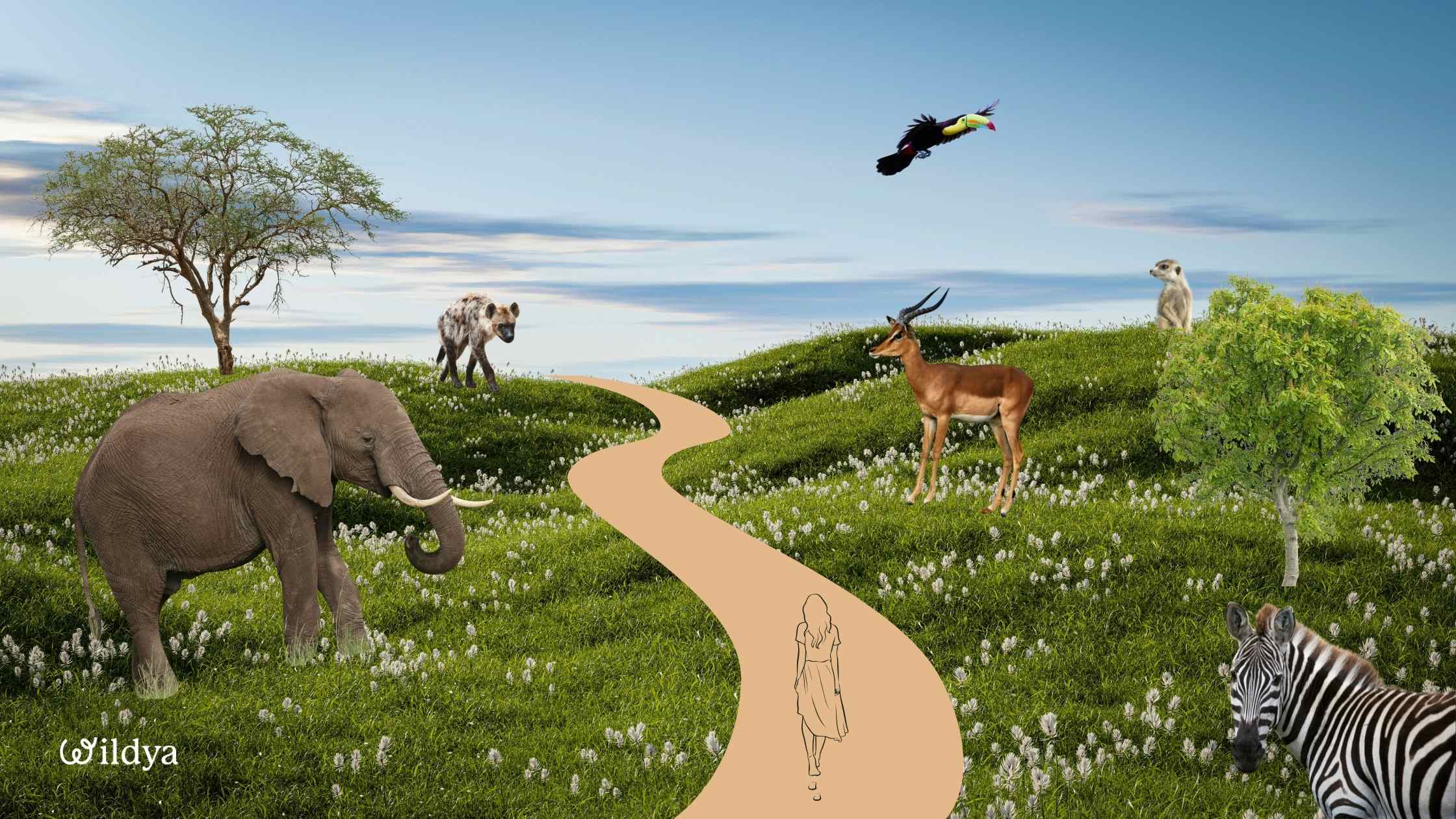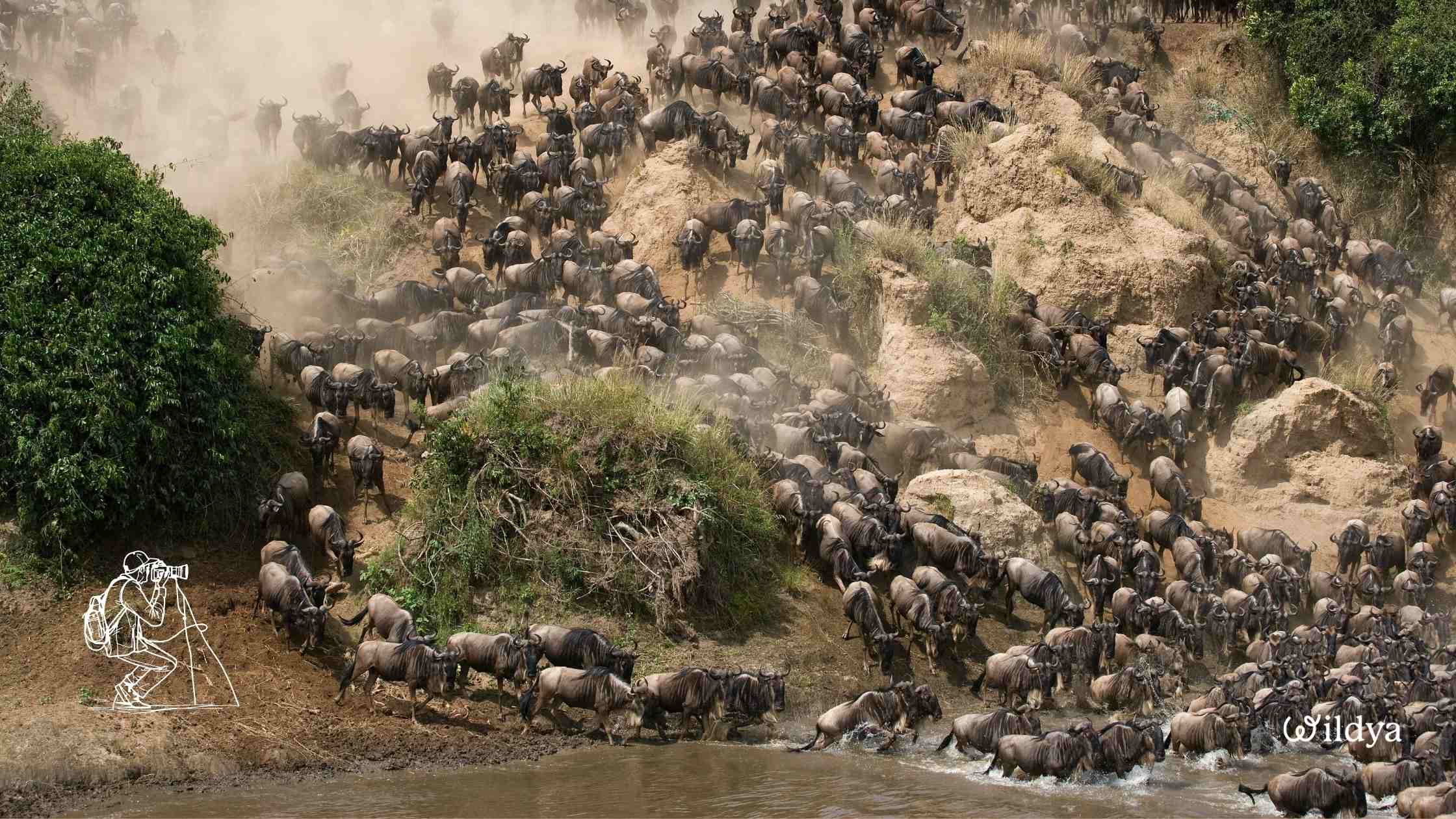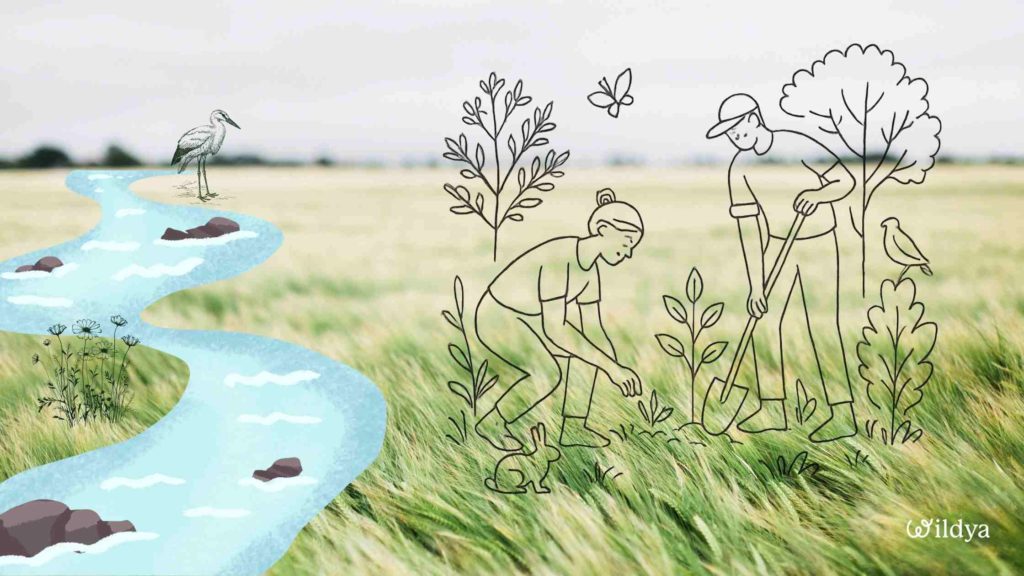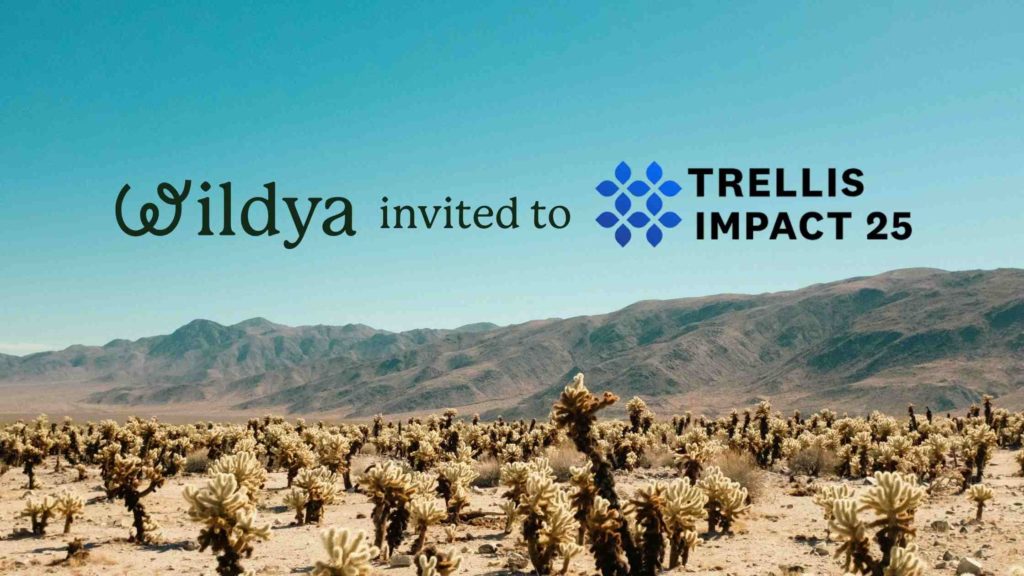
If you’re asking yourself how to start a green business, you’re in the right place.
You’ve got that little spark, the one that pushes you to do something tangible for the planet. To protect what’s still wild, restore what’s been harmed, and create a project that truly matters.🍃
But… Where to start?
At Wildya, we call a green business a nature venture: a project that grows with nature, not against it.
A project that regenerates rather than simply maintains. One that combines passion, impact, (and a bit of business strategy) to create both meaning and income.
We’ll guide you step by step on how to start a green business.
Because the world needs more ecopreneurs like you, ready to turn wild ideas into real impact for nature. 💪
Already ready to turn theory into practice?
The Ecopreneur Beginner Bootcamp helps you start a green business in just six weeks! From your why to your roadmap, your business model, and your first real supporters.
The next bootcamp starts on 7 January, don’t miss out!
Step 1: Start with your “why” (not your product)
Before thinking about what you’re going to sell, think about why you want to do it.
Why building a nature venture? Why does this project matter so much to you? Why is protecting this specific ecosystem important?
A green business doesn’t start with what (your product); it starts with why.
And your why is your mission.
When your mission is clear, everything else follows: your offer, your audience, your message.
👉 Take a moment and ask yourself: “What do I want to change for nature, and why does it matter to me?”
Some examples:
🐟“I want to restore rivers for aquatic wildlife to return, because I’ve seen their decline since I was a child.”
🗑 “I want to reduce plastic waste for my local community, because I don’t want my kids to grow up surrounded by rubbish.”
Your why is your compass. It keeps you aligned and gives meaning to every choice you make.
🦡 Wildya tip!
Write your why in one simple sentence: “I want… for… because…“
Keep it visible (post-it, wallpaper, notebook).
When you get lost, this sentence will bring you back on track.
Your why is what makes your green business unique. And it’s what your future community, partners, and supporters will connect to. Even before they see your product.
Step 2: How to start a green business the right way? Build your roadmap!

That’s it, you’ve got your why!
Now… How do you turn that spark into starting a green business?
It’s time to build your business roadmap, the tool that helps you turn your mission into action.
Think of it as a practical guide that helps you move from closer to impact.
1. Define the foundations when building a nature venture
Clarify what you want to create (product or service) and how it’ll bring a positive impact on nature.
🔧 Build a simple model: “I do X for Y, and I earn Z.”
- X = What you do
- Y = For whom/for what kind of impact
- Z = How you earn or finance your project
Identify your main costs (time, materials, environmental impact) and income sources.
2. Set your milestones
Choose 2-3 objectives for the next 90 days (e.g. building a prototype, getting your first client feedback, or launching a collaboration).
🏆 Add 1-2 indicators of natural impact (e.g. numbers of trees planted, waste avoided, pollinators supported) and 1 indicator of progress (“I have one pilot” or “I have a first paying customer”).
Write these milestones somewhere visible so you keep your focus (whiteboards are great to build roadmaps!).
3. Keep the course, but stay flexible when starting a green business
The market evolves constantly. Your roadmap should be like a guide, not a fixed rulebook.
Test, learn, adapt. Each piece of feedback is a gift!
🧘 Stay true to your why, but let your how evolve.
🦡 Wildya Tip!
Take the paper where your why is written.
Below it, write your three 90-day milestones and your two indicators of impact and progress.
Read them every week. If something doesn’t align with your why, adjust or let it go.
And if you realise a business isn’t the right fit for your project, and starting an NGO might work better, we’ve got you covered.
We’ve written a complete step-by-step guide to help you get started.
Step 3: Know your audience (they’re part of your impact)
You want to know how to start a green business? Well, the next step is all about knowing and understanding your target audience.
A project, even if the most passionate one, can’t grow alone. 🌱
A green business is like an ecosystem: it’s you, your mission, and all the people who will contribute, love, support, and make your business grow.
And your target audience is part of this ecosystem.
1. Who needs your project?
👉 Ask yourself this question: “Who’s concerned by the problem I want to fix?”
If you’re protecting pollinators (bees, butterflies…), your audience could be farmers or gardeners looking for tangible solutions. 🐝
Knowing your audience means understanding their needs so you can create something that benefits them.
2. Talk to them (and listen to them)
Talk to people. Listen to their challenges and their dreams. Read their comments in groups and forums. That’s your customer discovery.
Each conversation helps you adjust your offer, message, and how you present your mission.
The organisation SUGi (which restores nature in cities) built its community by listening to citizens.
They offered a simple and tangible way to act: participating in the regeneration of pocket forests within cities. 🌳 Today, thousands of people around the world support their project.
3. Your audience is part of your green business
Understanding your audience does more than help you sell.
Each person you reach can become a supporter, a partner, or an ambassador.
The stronger these bonds are, the bigger your impact on nature will be.
🦡 Wildya tip!
Create a quick sheet for yourself, answering these questions:
- Who are the people that I want to reach?
- What’s their connection to nature?
- Which emotion drives them to act?
- How can my project help them actively?
Your audience is your first learning ground.
Through them, you’ll understand how to start a green business that genuinely makes a difference for nature!
But understanding your audience is just the beginning when building a nature venture. Next comes knowing how to reach them.
And you’re lucky, we’ve written an article to help you get customers as an ecopreneur!
Step 4: Find your herd (people who’ll help you build a nature venture)

When you’re learning how to start a green business, you’ll quickly realise you can’t build it alone.
Behind any successful project, there’s collaboration.
Not necessarily a big team, but a group of people who believe in your mission and help make it real.
🧞♂️ A mentor who’s already walked this path and can help you avoid classic mistakes.
👩💻 Freelancers who believe in your mission and help you move faster (check out the recording of our masterclass on freelancers).
🇺🇳 Partners or local organisations that share the same commitment and help you open new doors.
That’s your herd. The people who help you test, adjust, and grow your project.
Take Imagine5. They are an environmental storytelling platform on a mission to inspire a greener life.
They partner with people (like Oliver Dauert, co-founder of Wildya), companies, create media collaborations, and build networks around their mission.
Their success comes not only from their storytelling skills but also from the network they have built around their mission.
🦡 Wildya tip!
Make a list of three people or collectives who could help you grow your project this year.
Contact them, propose an idea or simply have a chat.
The best collaborations often start with a simple message.
And if you’re ready to take it further, connect with other ecopreneurs who are building their nature ventures, exchange ideas, and find real collaboration opportunities, we’ve got a place for that!
The Ecopreneur Community is THE spot where you’ll find the resources and people to build or scale up your green business (no credit card required!).
Step 5: Build trust (show proof of your impact)
You want to start a green business, that’s great!
But to make it truly successful, you need to prove that your project has a real, positive impact on the environment, or else you’re not a green business. 🦎
To attract the right herd and audience, you must inspire trust.
And trust grows through transparency, social proof, measurable results, and certifications.
1. Show measurable results when starting a green business
When starting a green business, you need to show what you’re achieving with clear, simple data: regenerated land, waste collected, species introduced…
These measurable results are your first proof, the one people instantly understand.
2. Choose certifications
Certifications are another way to build credibility and visibility for your project.
🌸 B Corp recognises businesses that combine social and environmental impact.
🌼 1% for the Planet offers you a badge that proves you’re giving back part of your revenue to environmental actions.
For example, at Wildya, we’ve committed to giving 15% of our revenue back to nature.
🌹Fair Wild or Rainforest Alliance show that your practices respect ecosystems and promote real sustainability.
You don’t need them all! Start with one that fits your values and activity.
🦡 Wildya tip!
People support projects that they understand and trust.
Create an “Impact” page on your website to share your results and progress: how many species protected, corals replanted, hectares restored, or funds donated to conservation.
The more open and transparent you are, the stronger the trust becomes.
Step 6: How to start a green business that lasts? Keep the momentum (test, learn, adapt)

When you learn how to start a green business, you’ll understand that your project isn’t built all at once. It’s tested, shaped, and adjusted along the way.
A green business is alive, and like anything living, it evolves.
The most important thing is not to stop once your idea is launched. Keep testing.
Create your first prototype, share it with a small community, and observe their reactions.
The feedback will help you progress.
Too Good to Go started by testing their concept in just a few restaurants in Copenhagen.
Their model wasn’t perfect, but they learned by doing, they listened to users, adapted their offer… and turned into a global success! 🍜
Every feedback is an opportunity.
Take the time to analyse what works, what doesn’t, what’s worth keeping.
This process of continuous adjustment is what makes your green business stronger.
And don’t do it alone!
Share your trials, lessons, and even your mistakes with other ecopreneurs.
Sharing often brings fresh ideas or solutions you wouldn’t have thought of on your own.
🦡 Wildya tip!
Each end of the month, do a short review:
- What did I test?
- What worked?
- What failed?
- What did I learn?
- What should I adapt?
- Remember: it’s okay to pivot your ideas. 💚
You now know how to start a green business!
From defining your why, building your roadmap, finding your herd and audience, proving your impact, all the way to testing, learning and adapting.
Building a nature venture is a real journey.
A mix of patience, curiosity, courage, but most importantly, passion.
Don’t forget: every big initiative starts with a small idea. You’ve got this. 💪
And if you don’t want to figure out how to start a green business alone, we’re here for you.
The Ecopreneur Beginner Bootcamp helps you go from idea to action by shaping your business model, building your products, and getting your first paying supporters!
In just six weeks, alongside other ecopreneurs, Wildya helps you build your nature venture.
Sources
- How to start a sustainable business, Wolters Kluwer.


